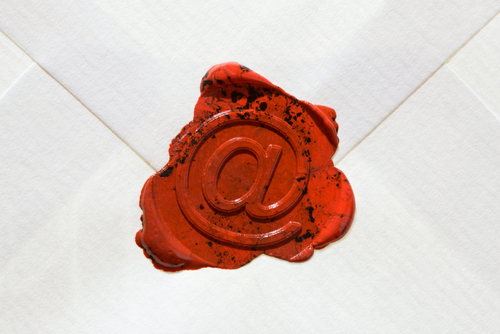
Lisa S. / Shutterstock.com
Sure, social media is very 2012. But e-mail is still the lifeblood of electronic communications, and whether you want it to or not, how you handle e-mail says something about your organization. ZD Net recently ran a story about personal e-mail addresses and the impression they give off about you, and the lesson is easily transferred to nonprofits organizations.
Many nonprofit organizations go through great lengths to get a website. Owning your own space to communicate on the Internet is extremely important, and even if the site is just a basic WordPress template, that can often be enough for the small nonprofit which just needs to be able to tell its story, explain how to get in touch, and how to support its work. (Don’t forget the “Donate” link. Very few people will click on it, but everyone should know that you want their money. More on that another day.)
Sign up for our free newsletters
Subscribe to NPQ's newsletters to have our top stories delivered directly to your inbox.
By signing up, you agree to our privacy policy and terms of use, and to receive messages from NPQ and our partners.
There’s probably a “Contact Us” link on that WordPress template somewhere. This is where the rubber hits the road. Do you have e-mail addresses of “firstname(at)yournonprofit.org” or does it say “yournonprofit(at)yahoo.com?” Including a generic e-mail provider as the way to reach your professional organization which has a serious mission creates a major disconnect. You want to be taken seriously, but a generic address says you miss details about who you are and how people can reach you. This is a real disconnect for an organization that is asking for public support, but you can fix this quickly, easily, and for free.
- Google Apps for Nonprofits has a suite of great services, but the first and easiest of them is e-mail for your website’s domain name. Don’t have a website domain name yet? They’ll sell you one and help set it up. Already have one? They’ll show you how to access your domain records and tell the Internet to send your e-mail to Google’s servers. This can seem intimidating at first. After all, who wants to break their website? Take heart. I’ve broken a few in my day, and they can always be fixed. Don’t let fear keep your nonprofit in the minor leagues.
- Once you’ve told the Internet e-mail community where to find you, you have to set up user accounts for each employee. They can access them on the web (I like using the shortcut mail.yournonprofit.org as a fast way to get to the web interface, and Google will tell you how to do that, too) or by using e-mail clients like Outlook. They can also use smartphones with this service, and it syncs very nicely.
- You may have old e-mail that you’d like to be able to search along with the new stuff. Google has you covered there, too. They have an import tool to bring your e-mail in from your desktop programs so that you can have it all in one place.
Once the switch is made—or once individuals have their own accounts for the first time instead of sharing an organization-wide e-mail address—then let the world know. Put it on the contact page at that WordPress site. You won’t have to worry too much about spam; Gmail filters will catch the bad stuff. Now you’ve got a “we’re open for business, and we get the details” sign up for the world to see.
Steve Boland lives at the intersection of community, policy and technology. He holds a Master of Nonprofit Management from Hamline University, and is a regular contributor to Nonprofit Quarterly. He can be reached at [email protected] or twitter.com/steveboland.













